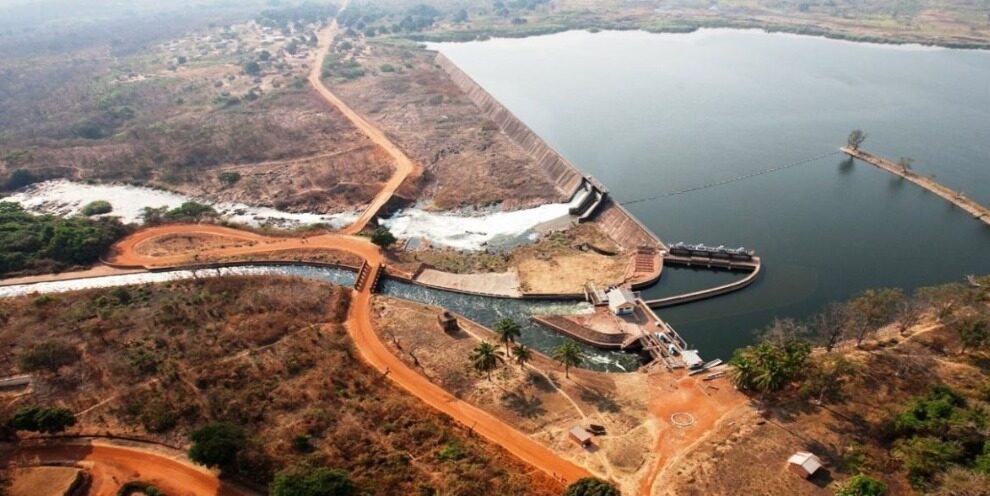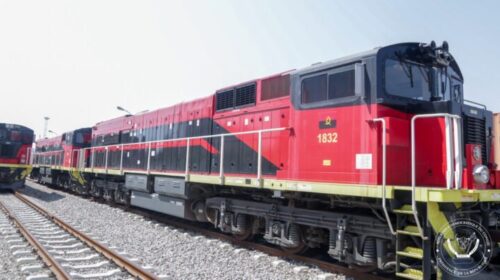Climate Change & Energy at Kamoa- Kakula project – DRC
Ivanhoe Mines accepts the assessment of the United Nations Framework Convention on Climate Change (UNFCCC) regarding climate change science, which findings include that temperatures are gradually rising globally due to human activities and that physical impacts are unavoidable. We believe humanity must pursue the twin objectives of limiting global temperature increase in line with current international agreements, while actively pursuing access to innovative, reliable and affordable energy to support economic development and improved living standards. Both of these objectives are essential to sustainable development.
As indicated by current scientific global climate change analyses, fossil fuels will continue to be a significant source of energy for the foreseeable future, while alternative energy sources gain momentum. Therefore, an accelerated effort is needed to drive energy efficiencies, develop and deploy low-emissions technologies, and adapt to the impacts of climate change.
Ivanhoe Mines’ overall strategy is to build a leading, commodity-diversified mining and exploration company through the current development of our principal projects in Africa, all of which will produce metals that are essential for sustainable development. A proactive response to climate change is foundational to achieving our objective to develop our projects in a sustainable, and environmentally and socially responsible manner.
Consequently, responding to climate change is governed at Ivanhoe Mines’ Board level through the Sustainability Committee. Executive management has primary responsibility for the design and implementation of an effective position on, and response to, climate change as our projects are being developed and mature into the operational phase. Robust engagement with a variety of stakeholders, including investors, policymakers, peer companies, non-governmental organizations and host communities, informs our climate change strategy and operational objectives.
Ivanhoe Mines’ climate change strategy is underpinned by four broad areas: low-emissions technology, portfolio positioning, reporting pathways and stakeholder resilience.
Mwadingusha hydropower plant in the Democratic Republic of Congo that will help supply the
Kamoa-Kakula and Kipushi projects with clean, sustainable hydroelectricity.
Low-Emissions Technology
Ivanhoe Mines is focused on the responsible development and operation of its highly unique mineral deposits in Southern Africa – two of which are internationally acclaimed discoveries made by Ivanhoe Mines geologists using innovative exploration methods. It is with the same spirit of innovation that our mining teams are pursuing new, low-carbon emission technologies to develop and operate our mines. We are focused on powering our mines primarily with electricity generated from clean, renewable energy sources, such as hydropower solar and wind where applicable, to help minimize the company’s environmental footprint. Our Kamoa-Kakula and Kipushi projects in the Democratic Republic of Congo are already using clean, sustainable, hydropower-generated electricity, and we are looking at ways to incorporate solar power to augment grid-supplied power at all our operations. As technology advances, we plan to incorporate electric and where appropriate automated vehicles into our mining fleet, replacing diesel-powered alternatives to further reduce emissions and keep our employees safe.
Portfolio Positioning
We acknowledge that responsible mining can play a key role in supplying the metals critical to helping humanity meet the challenges caused by climate change. The electrification of the automobile industry expected in the next 20 years, resulting in part from legislated orders to reduce air pollution as a response to international climate change treaties, will be one of the most significant transformations of our time. We are witnessing the dawn of an era of full-electric, hybrid-electric and hydrogen fuel-cell vehicles – cars, trucks, buses, trains and even autonomous aerial vehicles. Ivanhoe Mines plans to be at the forefront of the mining industry’s drive to produce some of the key metals – copper, nickel, platinum, palladium and zinc – that are essential for the new generation of environmentally-friendly vehicles.
Climate change mitigation strategies involving clean energy production, such as wind and solar energy, depend largely on the availability of critical resources, such as copper, nickel, platinum, palladium and zinc. Zinc plays a critical role in solar energy. Galvanized steel is the material of choice for the structures that support and align solar panels, while zinc also is a component of high-efficiency solar cells. The very high energy potential of zinc has made it a leading candidate in a range of future fuel cell and battery designs for grid storage and micro-grid generation.
Reporting Pathways
We are committed to taking a proactive approach in publicly reporting on our climate change-related activities while our principal projects still are in the development phase and as we continue to grow our company as an explorer and mine operator. We believe this approach will assist in maturing our reporting processes in a timely manner, and build a culture of energy efficiency and climate change resilience awareness in our workforce. In this regard, we voluntarily disclose our climate change information on the Carbon Disclosure Project platform.
Stakeholder Resilience
We acknowledge that climate change-related events potentially impact the people residing in the host communities of our projects and operations as they come on stream. Our projects and operations are situated in emerging economies, and our host communities are vulnerable to the potential impacts of global climate change. We prioritize strengthening the resilience of people and groups in our host communities through a variety of activities aimed at economic diversification, food security, water provision and digital inclusion. A leading example is the agroforestry bee-keeping project we have implemented at our Kamoa-Kakula Project to strengthen food security, alleviate poverty and combat deforestation.
35 total views , 1 views today





